Wind generated power now comprises a substantial proportion of Australia’s electricity supply.
As of September 2024, Australia had an installed wind capacity of approximately 13.3 GW. Wind power accounted for 13.4% (or 31.9 TWh) of Australia’s total electricity generation in 2024.
The Albanese government aims to generate 82% of Australia’s electricity by 2030 from renewable sources, including wind, solar, and hydro.
Some Australian states have set more ambitious renewable energy targets. South Australia has set a 100% renewable energy target for 2027, whereas Victoria intends to achieve 95% renewable energy by 2035.
A key flaw in these plans is that renewables are weather-dependent and intermittent, making them unreliable.
At the beginning of the month and a fortnight ago, I reported that a severe wind drought had hit eastern Australia, cratering wind turbine output for 48 hours at the same time as solar output was low due to winter.
Winter often brings wind droughts, which coincide with low solar generation due to cloudy conditions and shorter days.
This week saw gale-force conditions hit eastern Australia, which sent wind generation soaring.
Over the 48 hour period spanning 24-25 June, 91% of South Australia’s electricity generation came from wind:

South Australian electricity generation (24-25 June 2025)
Where I live in Victoria, 53% of electricity generation came from wind turbines over the same 48 hour period:
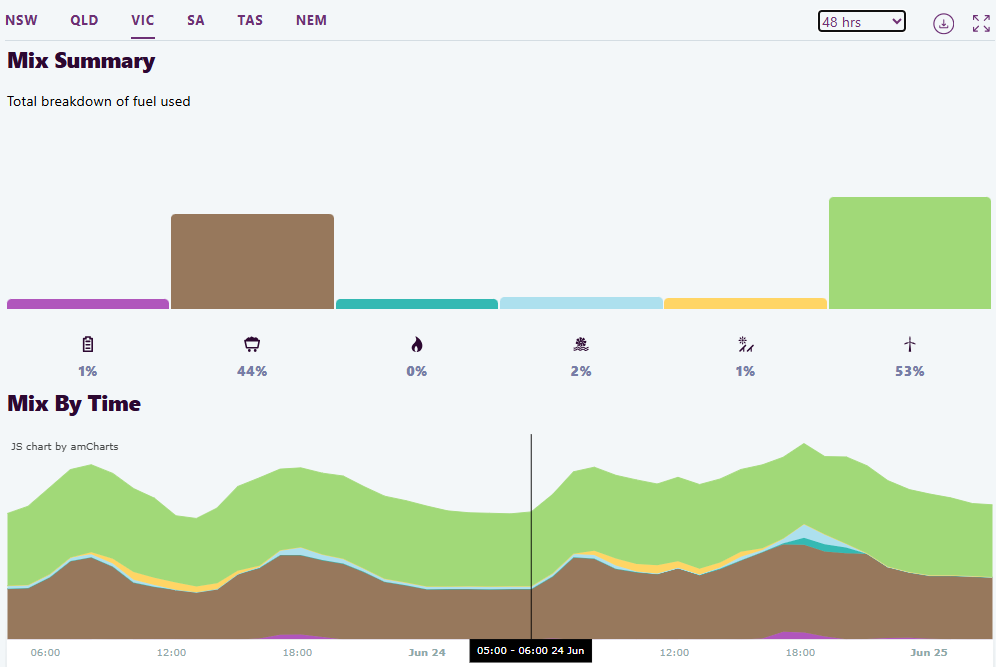
Victorian electricity generation (24-25 June 2025)
Across the entire National Energy Market (NEM), which comprises eastern Australia, wind turbines accounted for 34% of electricity generation over the 48 hour period:
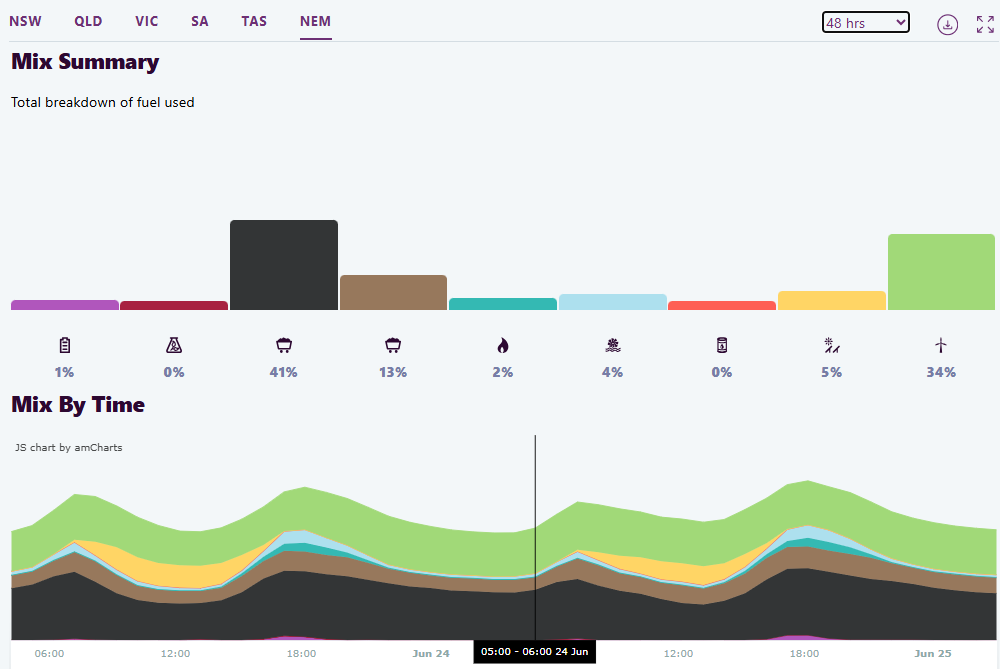
NEM electricity generation (24-25 June 2025)
Like clockwork, Renew Economy, were quick to declare record wind generation across eastern Australia:
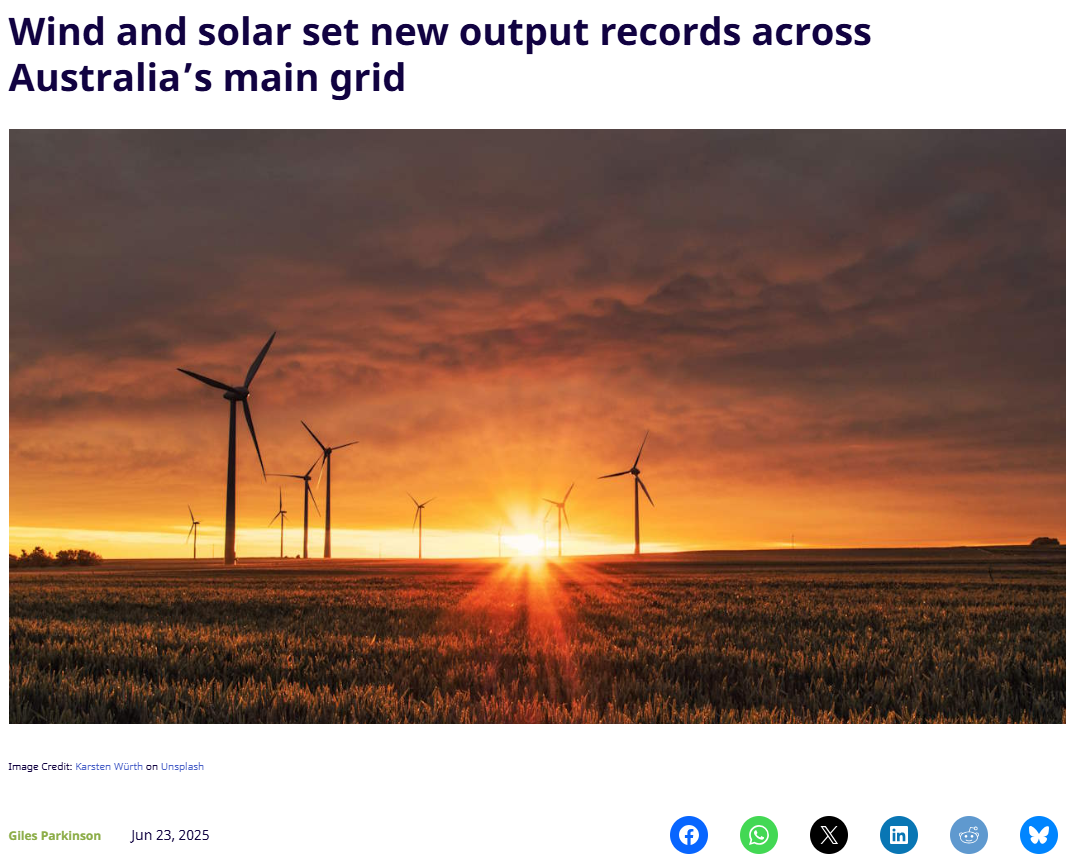
“According to data from GPE NEMLog, wind and solar set a new output peak of 12,563 megawatts (MW) at 10.30am on Monday, easily beating the previous peak of 12,261 MW set in December last year”, Giles Parkison from Renew Economy wrote.
However, as is so often the case with renewables, the wind came out of sail (pardon the pun) and eastern Australia was hit with another wind drought on Thursday, which cratered output.
At 7.05pm on 26 June 2025, just 3% of South Australia’s electricity output came from wind generation and zero from solar (nighttime). By contrast, 84% of South Australia’s electricity generation came from gas and 7% from dirty diesel.

South Australian electricity generation (7.05pm, 26 June, 2025)
The situation was even worse in Victoria, where at 7.05pm on Thursday, 0% of the state’s electricity generation came from wind and solar. By contrast, 53% of generation came from coal and 25% from gas.
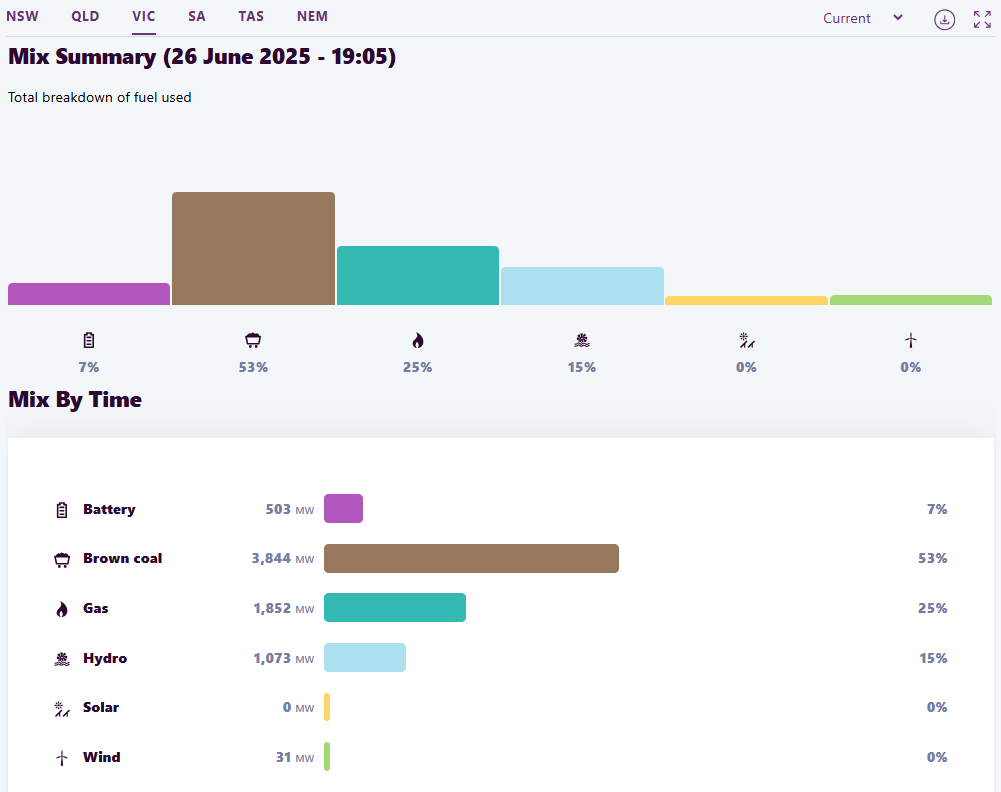
Victorian electricity generation (7.05pm, 26 June, 2025)
Across the NEM, just 3% of electricity generation at 7.05 pm on Thursday came from wind and zero from solar. By contrast, 52% came from coal, 25% from gas, and 1% from dirty diesel.

NEM electricity generation (7.05pm, 26 June, 2025)
The above data highlights the inherent problem with wind and solar generation: their intermittency and unpredictability.
How can Australia realistically expect to replace stable baseload electricity generation with weather-dependent and intermittent renewables? And how much will it cost?
Because renewables are unpredictable and intermittent, Australia would have to construct massive amounts of additional capacity, redundancy, and storage to ensure that there is always enough supply to meet demand. The costs will be substantial, increasing retail power bills and taxes (via subsidies).
Consider the following example, which I have cited previously. The Millmerran coal-fired power station near Toowoomba, Queensland, opened in 2002 and cost $1.5 billion to build. It is located approximately 130 kilometres from Brisbane, has an 850 MW capacity, and can run continuously if necessary (barring closures for maintenance).
The typical wind turbine operating in Australia has a nameplate of 3 MW. However, the most recent models under development can generate a maximum of around 6 MW, so I’ll be generous and use that higher figure.
To replace the Millmerran coal-fired power station with wind electricity, around 140 turbines (850 divided by 6) would be required solely for the nameplate.
However, wind power has a capacity factor of around 30%, which means that more than 450 wind turbines would be required to provide Millmerran’s typical electricity output. We’d also need a lot of pumped hydro or battery storage to keep excess power for usage during wind droughts.
The cost of these 450+ wind turbines would be astronomical. A 3.5 MW wind turbine typically costs between $6 million and $10 million to purchase and install. The newer and larger 6 MW turbines would surely incur additional expenditures.
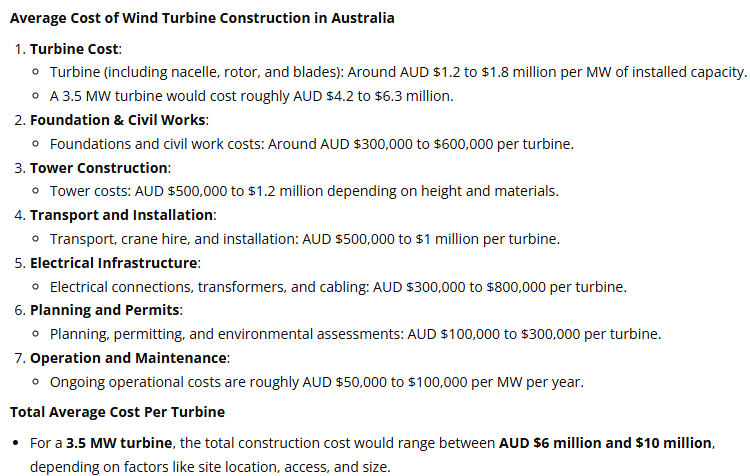
Additionally, there are significant costs for the transmission required to connect the turbines to the grid, as well as the construction of service roads to access each turbine.
Unlike the Millmerran power plant, which is only around 130 kilometres from Brisbane and is connected by a single set of transmission lines, the wind turbines would require a spiderweb of transmission lines and would be positioned further away, raising costs.
These transmission costs add directly to energy bills. For example, Victorian energy users face a 50% increase in electricity bills to pay for the rollout of transmission lines to support the state’s 95% renewable energy target.
Then add the costs of storing wind electricity (by pumped hydro or batteries) so that it is available on demand rather than only when the wind blows.
The example above demonstrates how transitioning to a renewable energy future will be costly and result in a less stable electricity grid. Energy costs will rise, taxes will rise (to fund subsidies), and blackouts will become more prevalent.
The environmental costs of clearing land to house wind turbines (for example, the construction of service roads and tree clearing) should be included, as well as the thousands of tonnes of concrete and reinforced steel necessary for the foundations:

In short, the environmental impact of wind power is huge.
The reality is that weather-dependent energy is inherently unreliable energy. It is also incredibly expensive due to the huge amounts of transmission and storage needed and the requirement to keep fossil fuel generators on standby when wind and solar generation collapses.
Policymakers should be upfront about the significant costs and trade-offs in Australia’s renewable energy transition.

